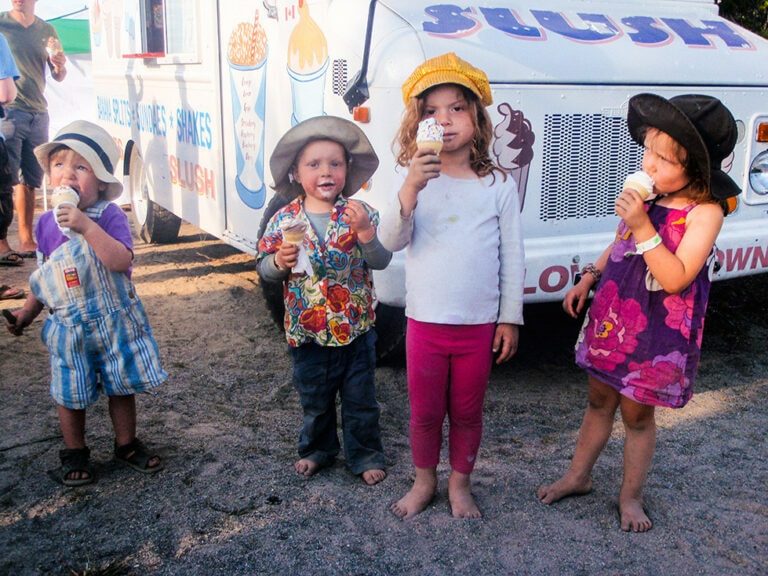“When we imagine the future, we never think of native people.”
Growing up in Fort Smith, Travis Mercredi says he always saw the future as synonymous with cities, not the “rural Indigenous North.” For those around him, reconciling their traditions with modernity was a constant struggle.
“My family, growing up, everyone was reading science fiction novels and magazines, fantasy books and into videogames and computers. Even though people were pretty bush, they were actually pretty high-tech,” he recalls. “Everyone watched Star Trek like it was an unspoken thing. But it’s almost like we can’t reconcile with that, because Indigenous people can’t allow themselves to. It’s a quandary.”
Over the last couple of years, however, the Metis sound engineer says he’s started reimagining what the future could look like for Indigenous people, as technologies and lifestyles evolve.
Now a computation arts student at Concordia University, Mercredi says: “The future’s going to be in whatever place I want it to be, and that’s not the city,” he says.
But what exactly will such a place look like?
Imagination as resistance
That’s the question a massive, multi-million-dollar Social Sciences and Humanities Research Council of Canada (SSHRC) research grant is hoping to answer over the next seven years.
Led by Concordia’s Aboriginal Territories in Cyberspace (AbTeC) lab, a network of academic and arts-based partners from across Canada are exploring what future possibilities are out there for Indigenous peoples, through everything from videogame development to artist residencies, new media archives and symposia.
“The dominant discourse is that Aboriginal people are relics from the past. It’s time to actively push back against this narrative.”
Called the ‘Initiative for Indigenous Futures,’ the project aims to plot a roadmap forward so people know what real-world solutions to work towards now, according to Jason Lewis, a computation arts and design professor at Concordia’s AbTeC and the principal investigator.
“When we look at images of the future in popular culture — like sci-fi movies or videogames — Indigenous people are very rarely represented,” he says. “The dominant discourse is that Aboriginal people are relics from the past. It’s time to actively push back against this narrative.”
Students at the AbTeC lab are already designing games based on their own stories, like Otsi:! Rise of the Kanien’kehá:ka Legends, a videogame where an Iroquois hunter is on a mission to stop a monster from destroying his village.
In the Northwest Territories, the Dechinta Bush University Centre for Research and Learning and Western Arctic Moving Pictures are partners on the grant.
Erin Freeland-Ballantyne, Dechinta’s dean of programs, says the funding is important for creating a conversation from which Indigenous peoples have historically been excluded.
“Imagining an Indigenous future is an act of resistance, because we spent the last 100 years trying to erase there being any kind of Indigenous future,” she says. “I think we’re going to push new space and create a more international conversation about what the future looks like from an Indigenous perspective and what the roles are for all community members, Indigenous and non-Indigenous, in that future.”
Digital lands
As the NWT’s sole land-based university, Freeland-Ballantyne says Dechinta is looking at what Indigenous connections to land will look like in the years to come, and what kinds of educational and employment opportunities new media technologies can create for the North.
“We’re interested in this interface between innovation and technology and the land, and how that can really mobilize land-based teaching into digital formats like games,” she says.
I’m tired of seeing so many people in my generation just go get a job in the mine, like that’s going to benefit us.
With the grant money, Dechinta plans to explore how new technologies, like fibre-optic lines, connect communities and create employment opportunities through sectors like gaming and web design.
First Nations across North America are already engaged in their own virtual storytelling, like the Inupiat videogame from Alaska, Never Alone.
“We’re really interested in the innovation aspect,” Freeland-Ballantyne says. “Is there a knowledge economy that can emerge through this kind of training, and where will that go over time with the fibre-optic line?”
A major component of the grant will be to offer storytelling and digital media design workshops in remote Indigenous communities across the country. Known as the Skins program, the workshops provide Indigenous youth with the creative and technical skills needed to “translate the oral tradition into virtual reality,” like games and apps.
“There’s a lot of training embedded in the grant,” Ballentine says. “At Dechinta, we’re looking at embedding an Indigenous futures curriculum in the Dechinta degree… so people who are interested in these new technologies, new digital media and art, can really have a lot of mentorship and support from some of the leading artists in the field across the country.”
Adapting and evolving
While the focus on Indigenous futures might be recent, that wasn’t always so, Mercredi says. Prior to colonization and the wave of assimilationist and genocidal policies that tried to strip Indigenous peoples of a future, there was always a forward view, whether through prophecies or the concept of sustainability over seven generations.
Similarly, Indigenous peoples were always able to adapt to new technologies. The tools that allowed for trapping are often considered historical, but at the time were futuristic inventions.
“We have the capacity, the critical thinking and tools to live in reciprocity with the environment,” Mercredi says. “Whatever the technology that was available, you were able to use it in this reciprocal approach that’s tied to Indigenous ideology.”
Now, Mercredi would like to see Indigenous peoples take that same approach to digital technologies, to propel themselves out of the stagnation that has resulted from forced settlement and imposed government and educational models. Embracing new means of invention won’t just create opportunities and solutions for Indigenous communities, he says, but more importantly, hope.
“How are we going to solve things like hopelessness, suicide? I’m tired of seeing so many people in my generation just go get a job in the mine, like that’s going to benefit us. I understand people who do that, because it’s a necessity for them, but I feel like we lose so much of what’s possible,” Mercredi says.
“It’s almost like the time is right for the future to be in the North. You don’t have to be in a city any more, because we have the tools. One thing we need, I think, is sort of the political will to say this is a conduit for the efforts of the people, not just waiting for a mine to roll around.”
In the same way that science fiction has offered “a cogent, articulate voice on the nature of now by imagining possible futures,” Mercredi says the conversations emerging from the research are allowing Indigenous people to have a conversation on what to do right now about training and education for the generations to come.
“I find this extremely exciting because it makes sense of who we are now. It offers a possibility for what we do as Indigenous people now,” he says. “The Indigenous future imaginary is an aspect of self-determination. It’s a key part. What do we want, and how do we get there?”
The Initiative for Indigenous Futures will launch in Yellowknife and Dechinta in May.







